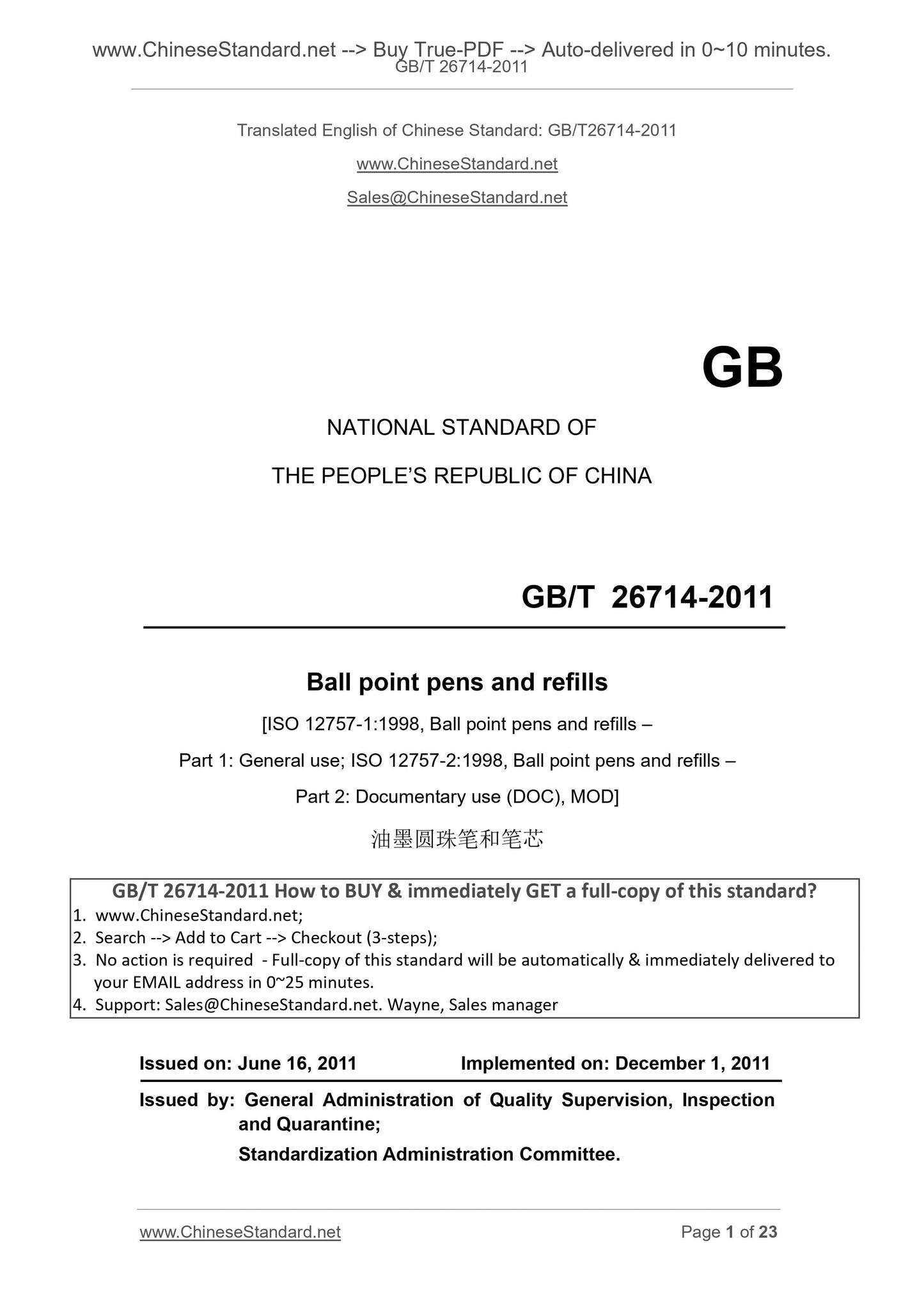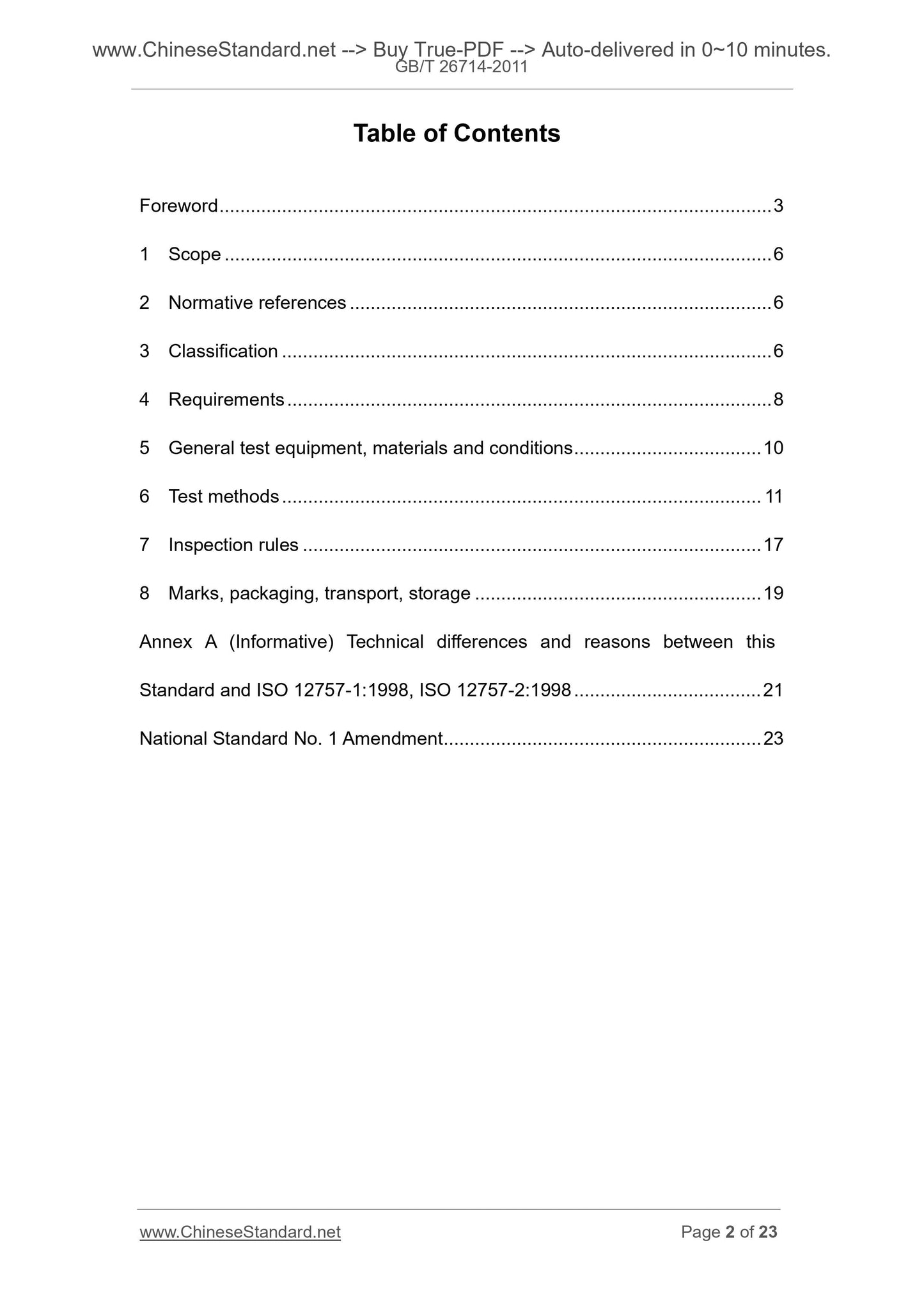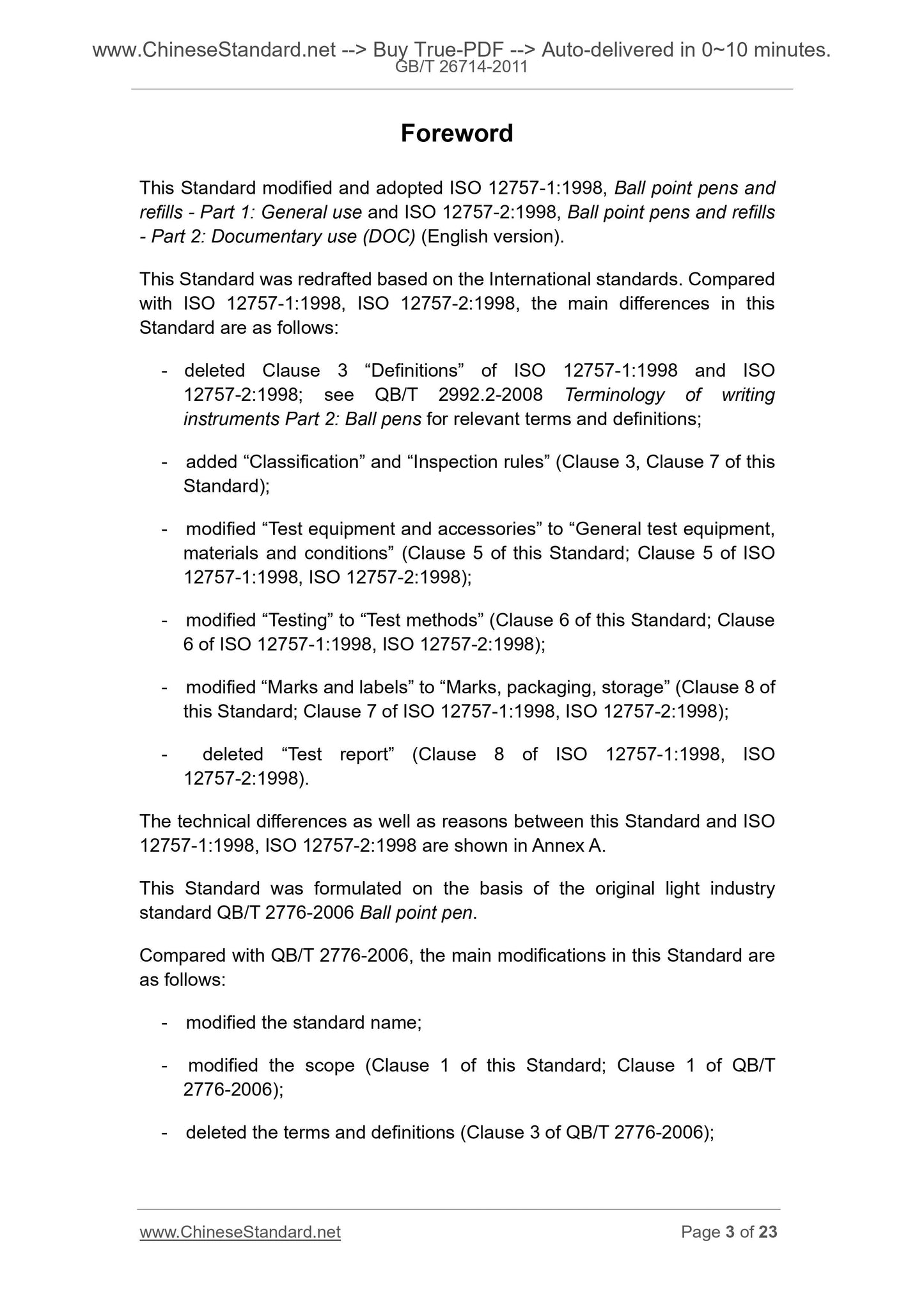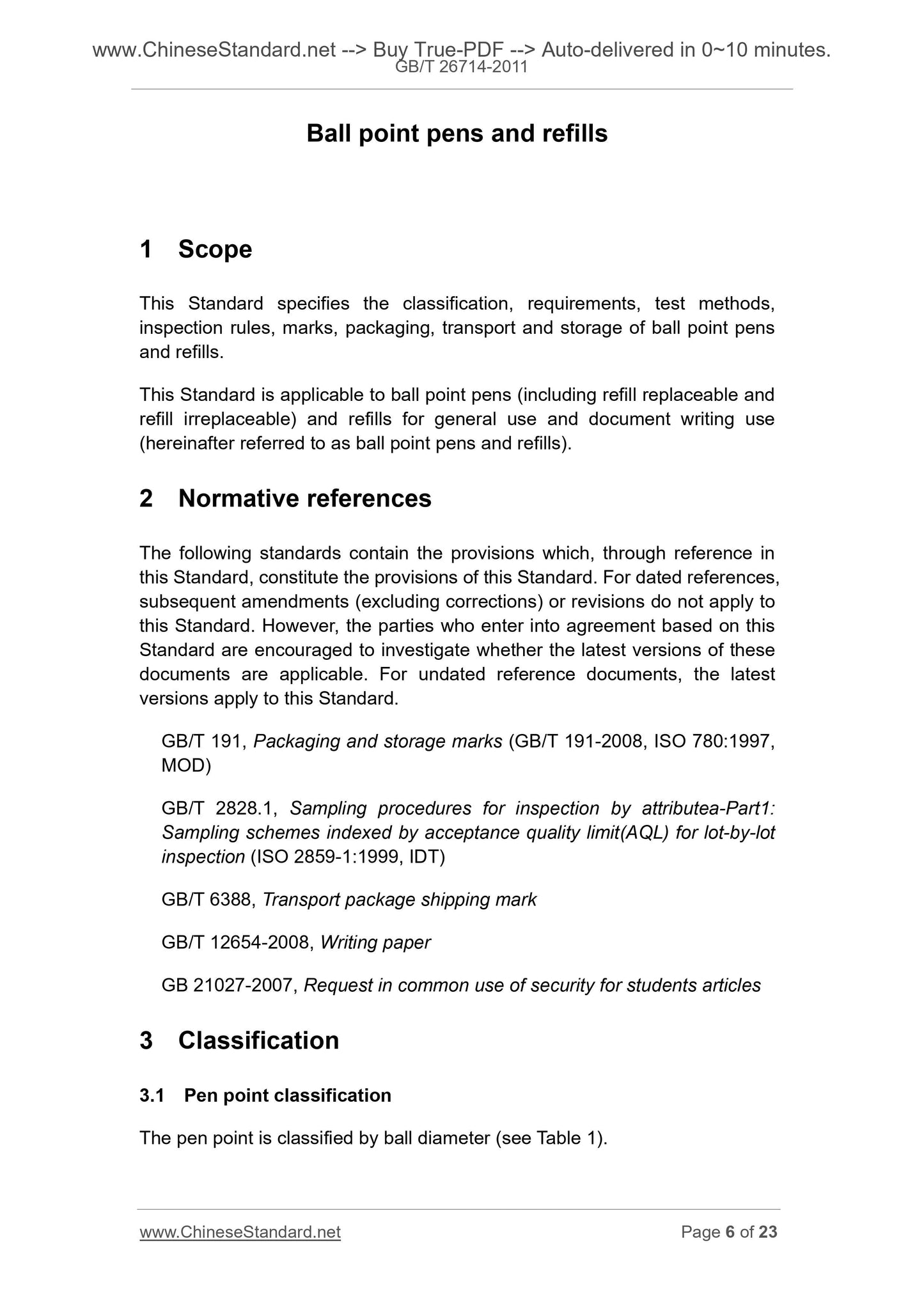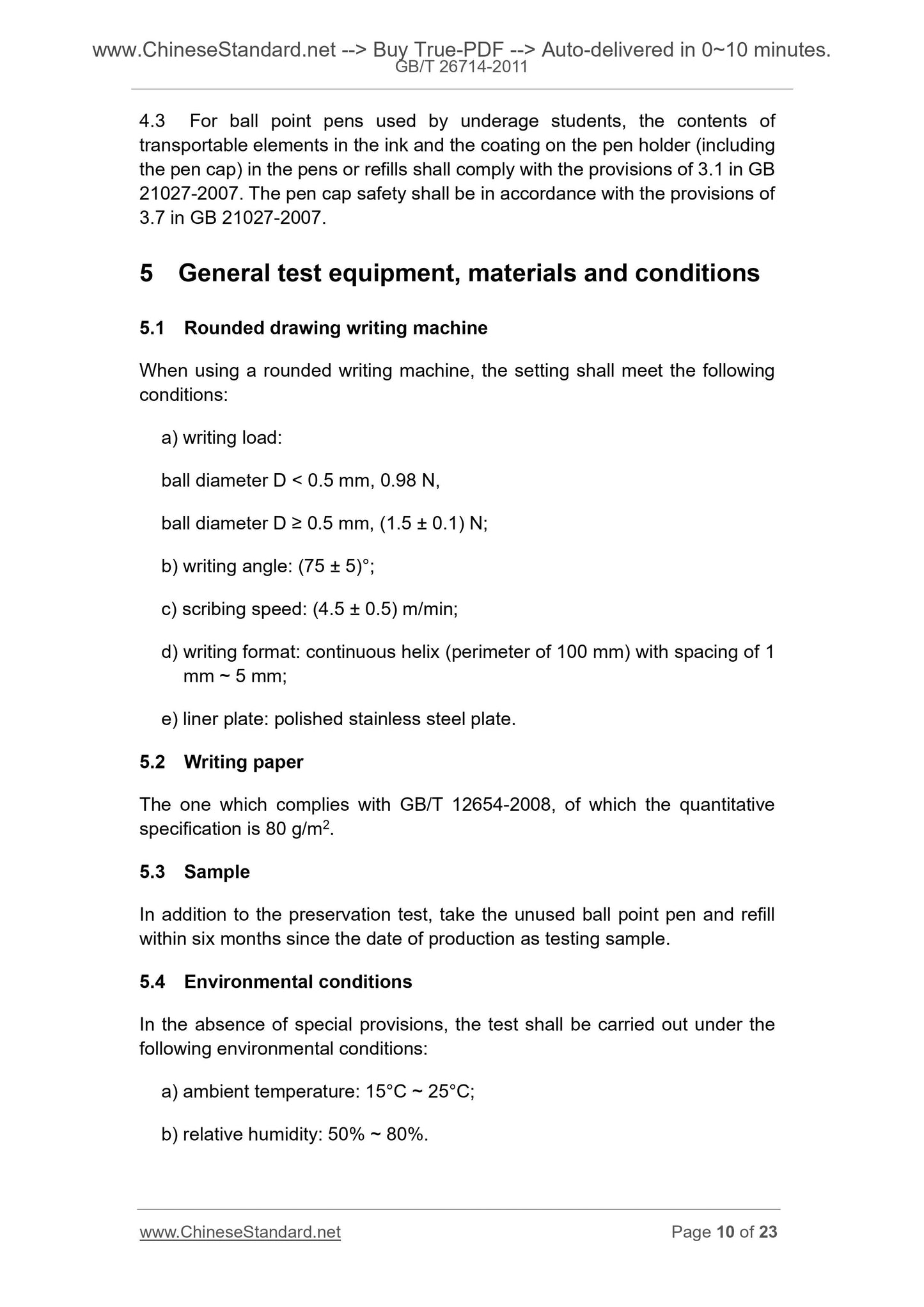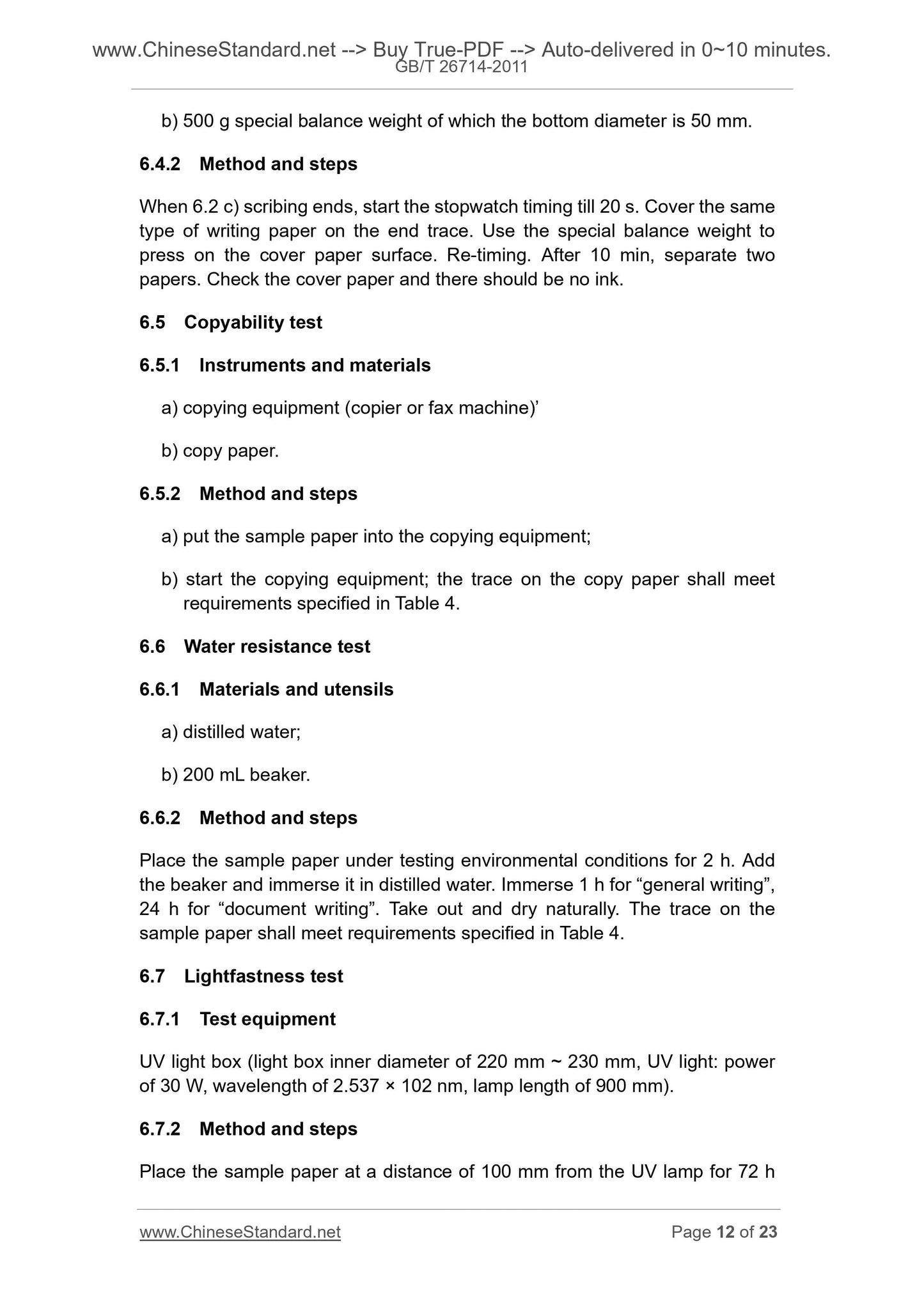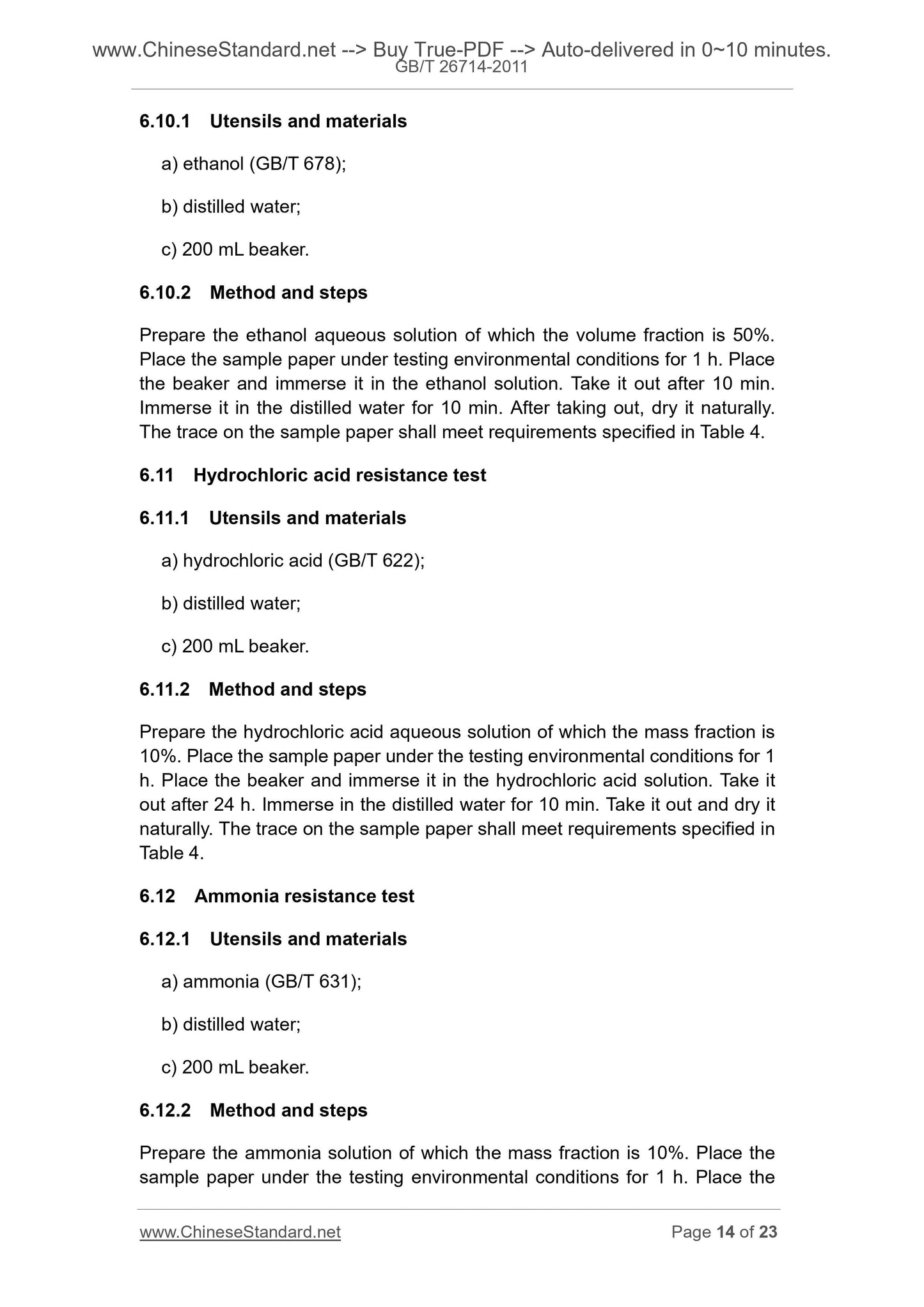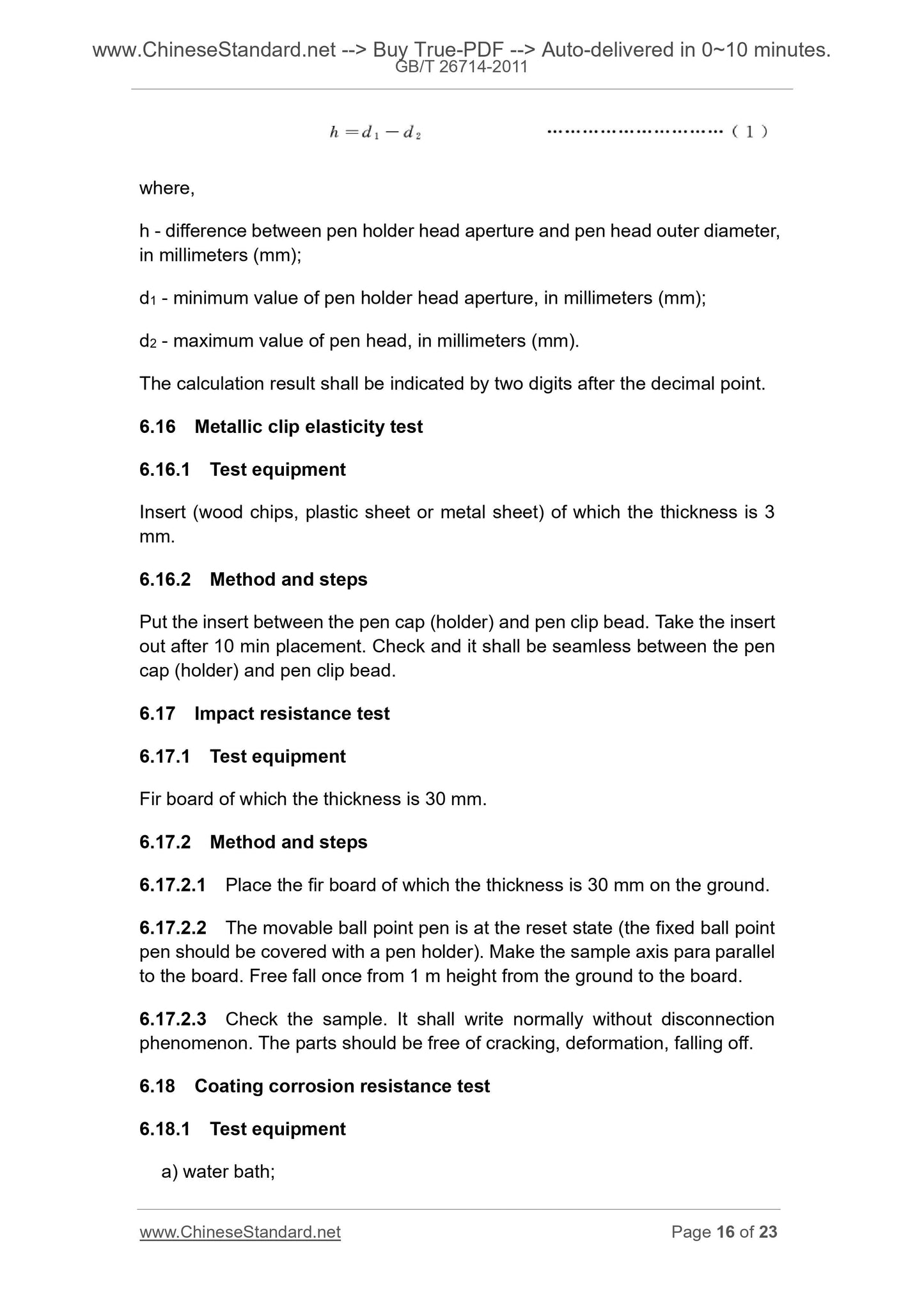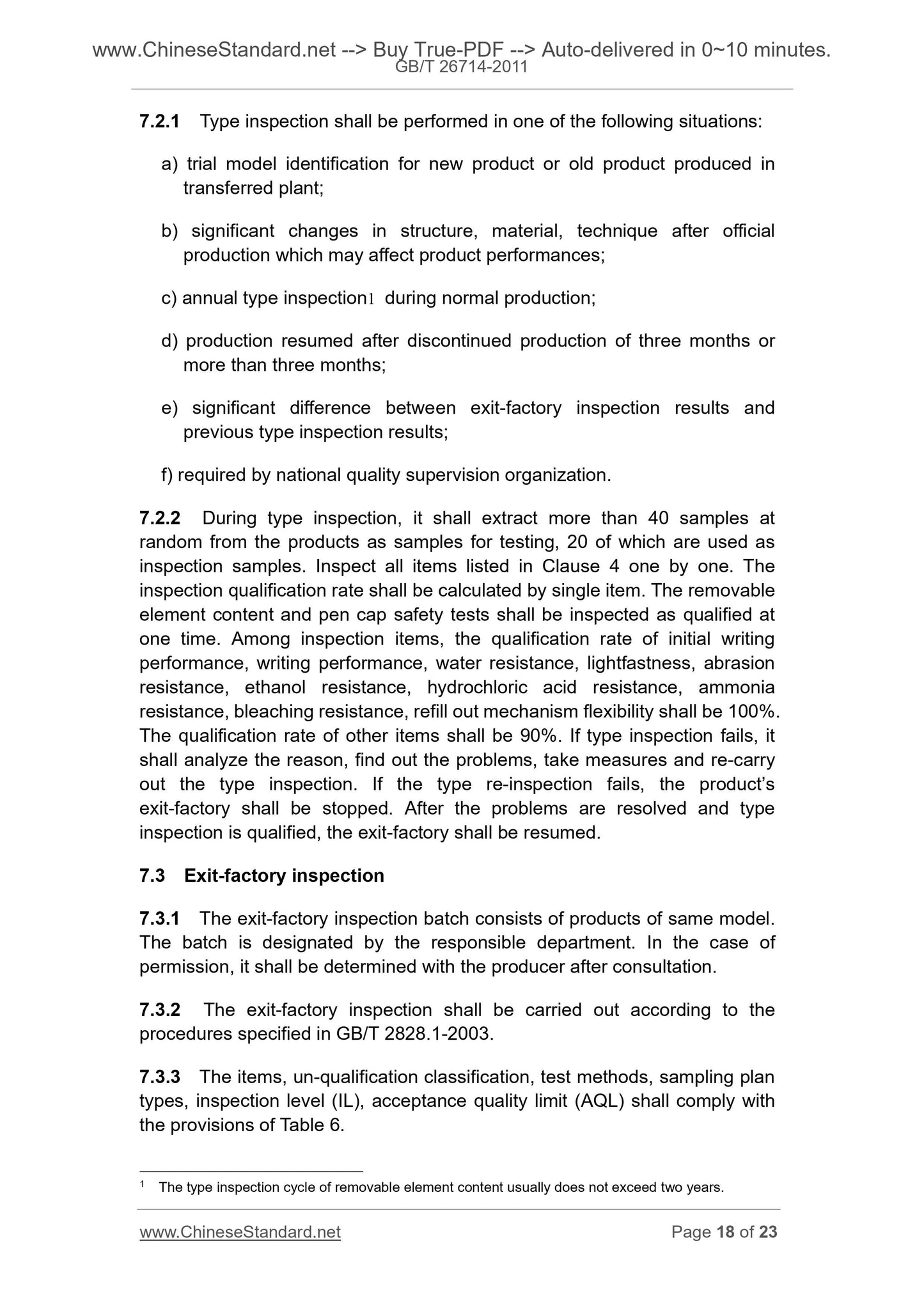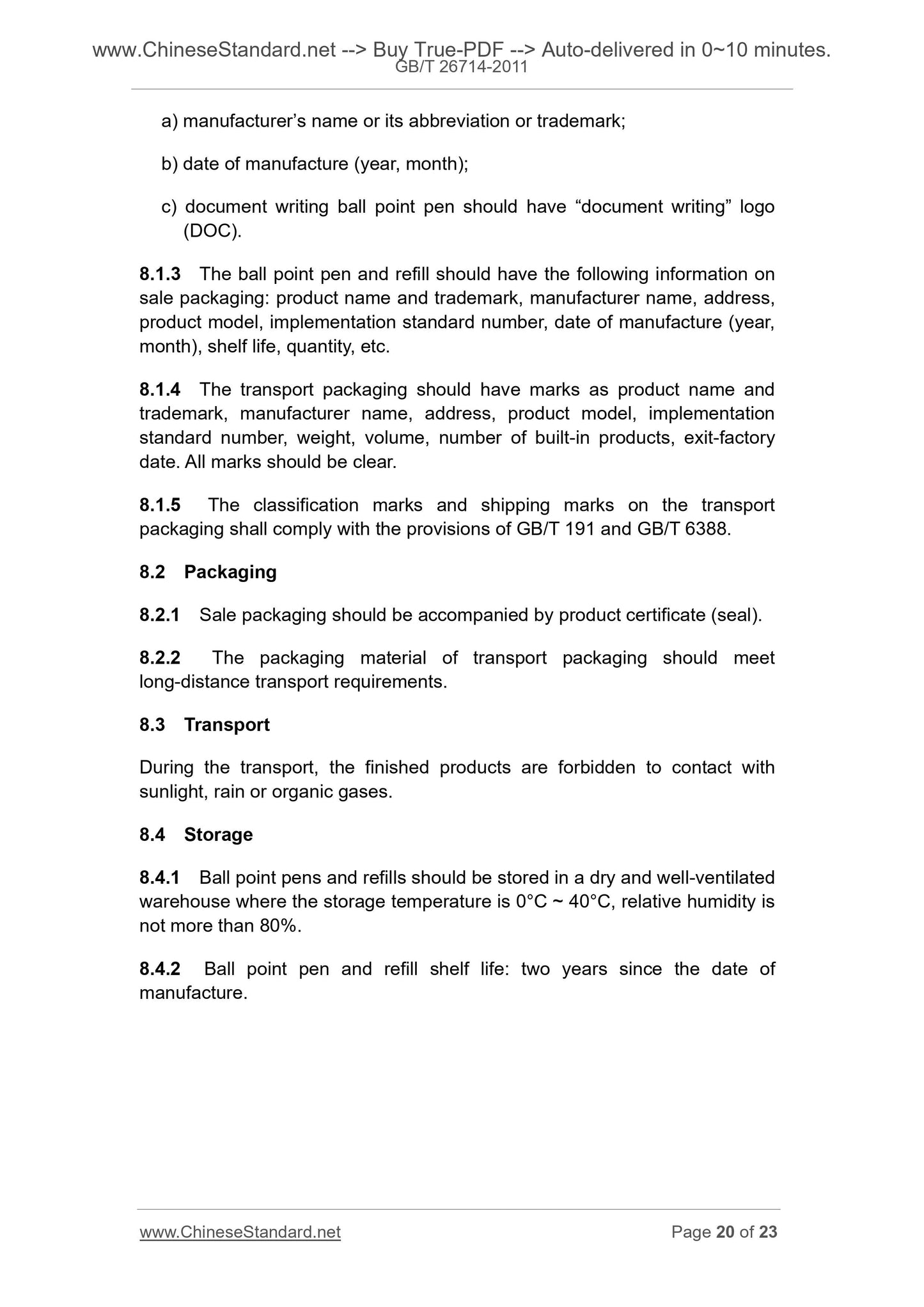1
/
of
10
www.ChineseStandard.us -- Field Test Asia Pte. Ltd.
GB/T 26714-2011 English PDF (GB/T26714-2011)
GB/T 26714-2011 English PDF (GB/T26714-2011)
Regular price
$85.00
Regular price
Sale price
$85.00
Unit price
/
per
Shipping calculated at checkout.
Couldn't load pickup availability
GB/T 26714-2011: Ball point pens and refills [including 2015 MODIFICATION 1]
Delivery: 9 seconds. Download (and Email) true-PDF + Invoice.Get Quotation: Click GB/T 26714-2011 (Self-service in 1-minute)
Newer / historical versions: GB/T 26714-2011
Preview True-PDF
Scope
This Standard specifies the classification, requirements, test methods,inspection rules, marks, packaging, transport and storage of ball point pens
and refills.
This Standard is applicable to ball point pens (including refill replaceable and
refill irreplaceable) and refills for general use and document writing use
(hereinafter referred to as ball point pens and refills).
Basic Data
| Standard ID | GB/T 26714-2011 (GB/T26714-2011) |
| Description (Translated English) | Ball point pens and refills [including 2015 MODIFICATION 1] |
| Sector / Industry | National Standard (Recommended) |
| Classification of Chinese Standard | Y50 |
| Classification of International Standard | 97.180 |
| Word Count Estimation | 15,117 |
| Date of Issue | 2011-06-16 |
| Date of Implementation | 2011-12-01 |
| Quoted Standard | GB/T 191; GB/T 2828.1-2003; GB/T 6388; GB/T 12654-2008; GB 21027-2007 |
| Adopted Standard | ISO 12757-1-2008, MOD; ISO 12757-2-2008, MOD |
| Regulation (derived from) | Announcement of Newly Approved National Standards No. 9 of 2011 |
| Issuing agency(ies) | General Administration of Quality Supervision, Inspection and Quarantine of the People's Republic of China, Standardization Administration of the People's Republic of China |
| Summary | This standard specifies the ballpoint pen and ink refills back to the classification, requirements, test methods, inspection rules, marking, packaging, transportation and storage. This standard applies to general writing and document writing ink ballpoint pen (including for non-interchangeable core type and core type) and refills (hereinafter referred to as ballpoint pens and refills). |
Share
